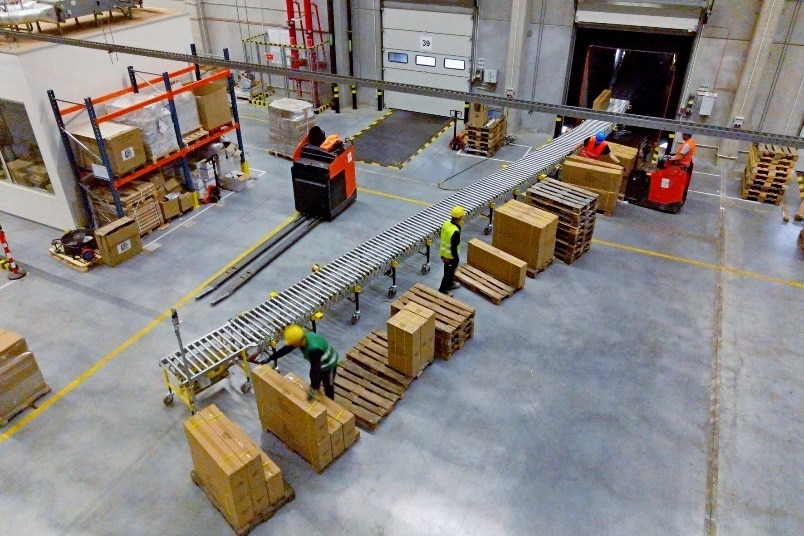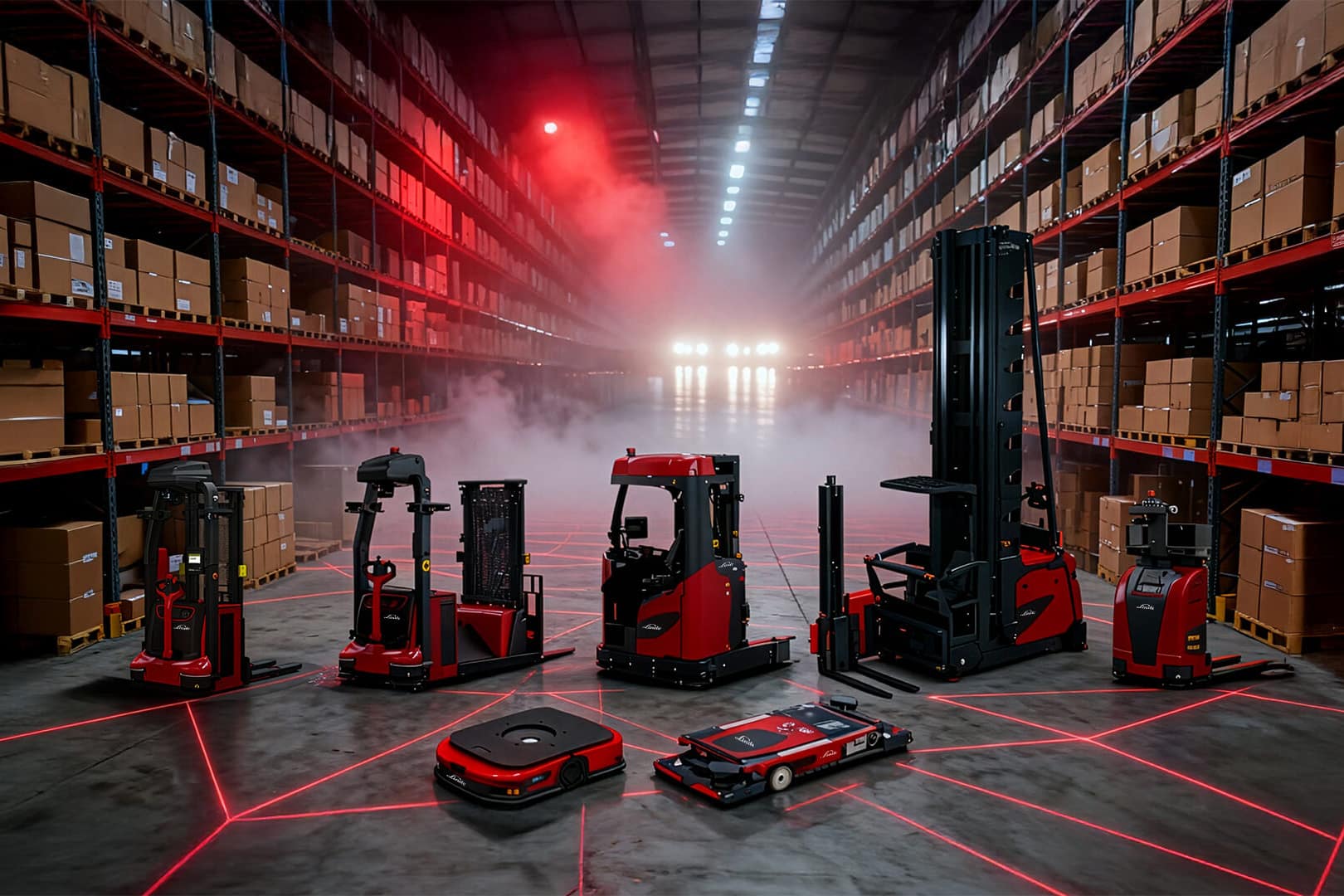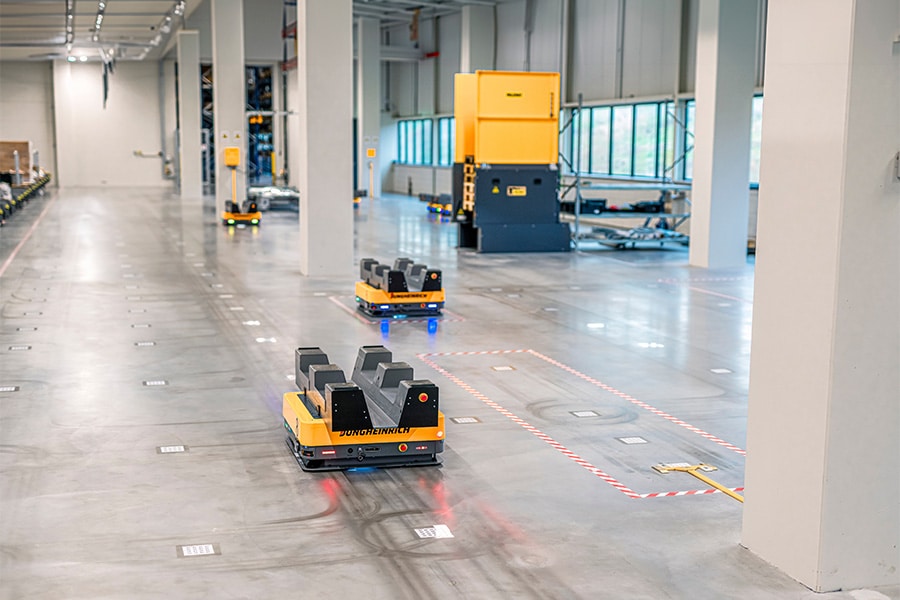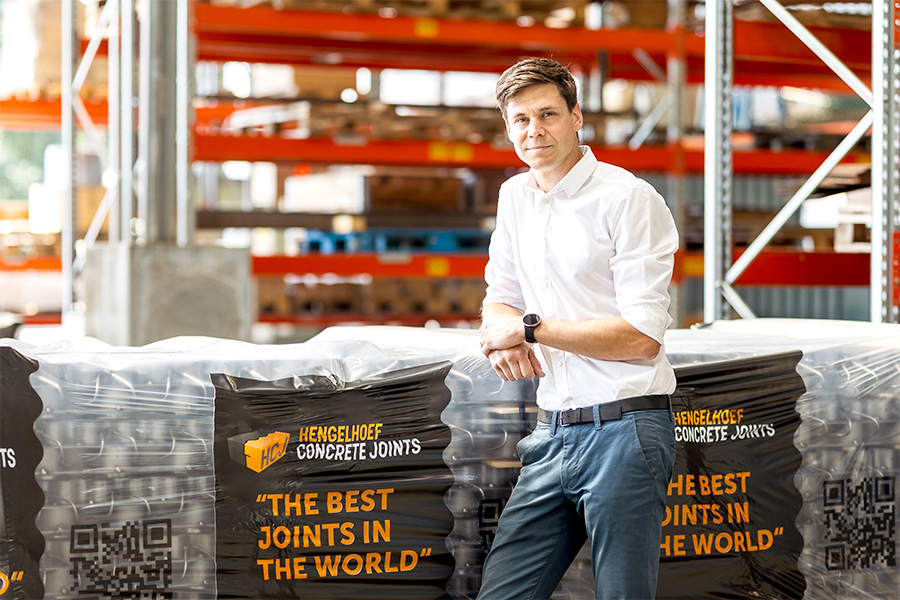
Innovative dilation technology ensures optimal floor protection and load transfer
On a daily basis, industrial floors are heavily loaded by machinery, vehicles and human activity. Proper protection of these floors is therefore essential. Not only to extend their lifespan, but of course also as a guarantee for efficient and safe working conditions. With its dilatation technology, HCJ (Hengelhoef Concrete Joints) has for many years offered a revolutionary solution to reconcile joints and floors.
From the continuous movement of goods and machinery to the loading and unloading of trucks, forklifts drive thousands of tons of material over floor joints in production and logistics areas every day. This creates a vicious cycle of damage, inconvenience and unsafe work situations. Raf Jaenen, CEO of HCJ, briefly outlines how companies used to address the shrinkage problem in industrial floors. "Before roughly the 1980s, a floor was cut to pieces via saw cuts. Although the shrinkage problem was solved, people created new problems by not providing load transfer and floor edge protection."
"After the 1980s, we saw the application of expansion joints emerge to accommodate the shrinkage of concrete. At first glance a good solution, but dependent on the type of wheels of forklifts and the intensity of forklift traffic."
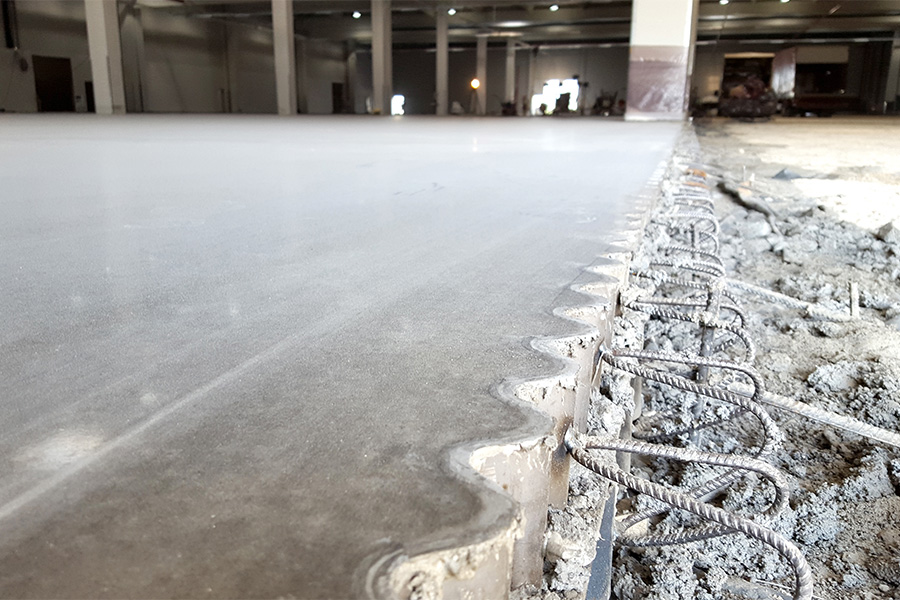
'The grout is the floor, the floor is the grout'
"Moreover, any traditional straight expansion joint has one major disadvantage, namely the joint opening," Raf continues. "In a logistics environment, the wheels of forklifts fall into these openings, which in time causes damage to both the floor, the transport vehicle and the goods being transported. Not to mention the impact on forklift drivers."
"With HCJ, we have been working for years on innovative solutions to eliminate - in addition to reinforcing floor joints - the causes of potential damage," Raf confirms. "For example, in 2007 we launched our Sinus Slide® solution, where forklift wheels glide silently and shock- and vibration-free from one floor section to another, without the risk of damage. In 2012, we went one step further, introducing the Cosinus Slide® floor concept. In our search for the perfect expansion joint, we moved away from traditional (continuous) dowelling and anchoring. Based on the principle "the joint is the floor, the floor is the joint," the floor slides over each other. We call that horizontal dilation. So the floor itself provides the most optimal joint."
Cosinus Slide®: revolutionary technology
Raf further zooms in on the numerous additional benefits of HCJ's Cosinus Slide® concept, the company's flagship product. "Due to the high load transfer of the Cosinus Slide® joint - combined with the correct calculation - we can optimize the floor thickness, make it thinner and thus save money for our customers. Thus, we also succeed in reducing the carbon footprint. I would also like to mention the low repair costs and the opportunity to build an industrial floor in a future-proof way, with a longer lifespan.
And last but not least, our globally patented Cosinus Slide® joint ensures efficient warehouse design: after all, thanks to the large load transfer, you no longer have to take into account the positioning of warehouse racks in relation to the joints." That this globally patented solution is a hit is evidenced by the great references Raf and his team can provide, including major companies such as IKEA, Volkswagen, Amazon, H.Essers, Panattoni, WDP and Katoen Natie as satisfied users. "90% of our produced joints are destined for export, half of them outside the EU," Raf points out.
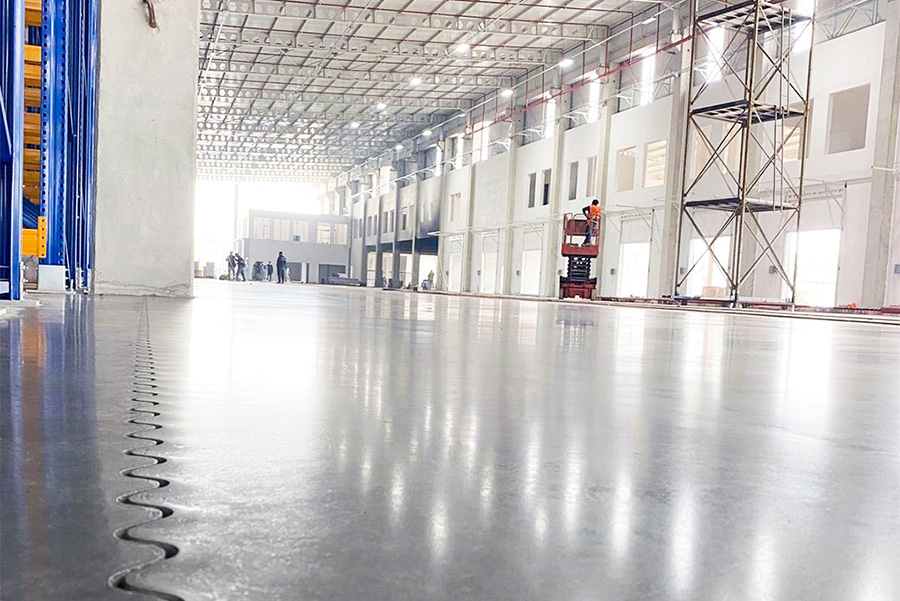
Calculation of exact capacity load transfer
And the experts at HCJ go one step further. Raf explains, "The calculation of an industrial floor was always based on a certain assumed load transfer of the joints, usually with a percentage of 40%. This percentage was just an assumption. So people were not calculating with correct values."
"For several years now, our team has been able to measure the exact load transfer capacity of the Cosinus Slide® joint. For all relevant loads and combinations, we generate a complete calculation up to ULS ('Ultimate Limit State', n.v.d.r.). This calculation does not replace the design of the industrial floor slab itself, but ensures that the floor design is calculated with a real and correct value of load transfer capacity of the joint. This additional support is one of the many strengths we use to make a difference for our customers." ■

